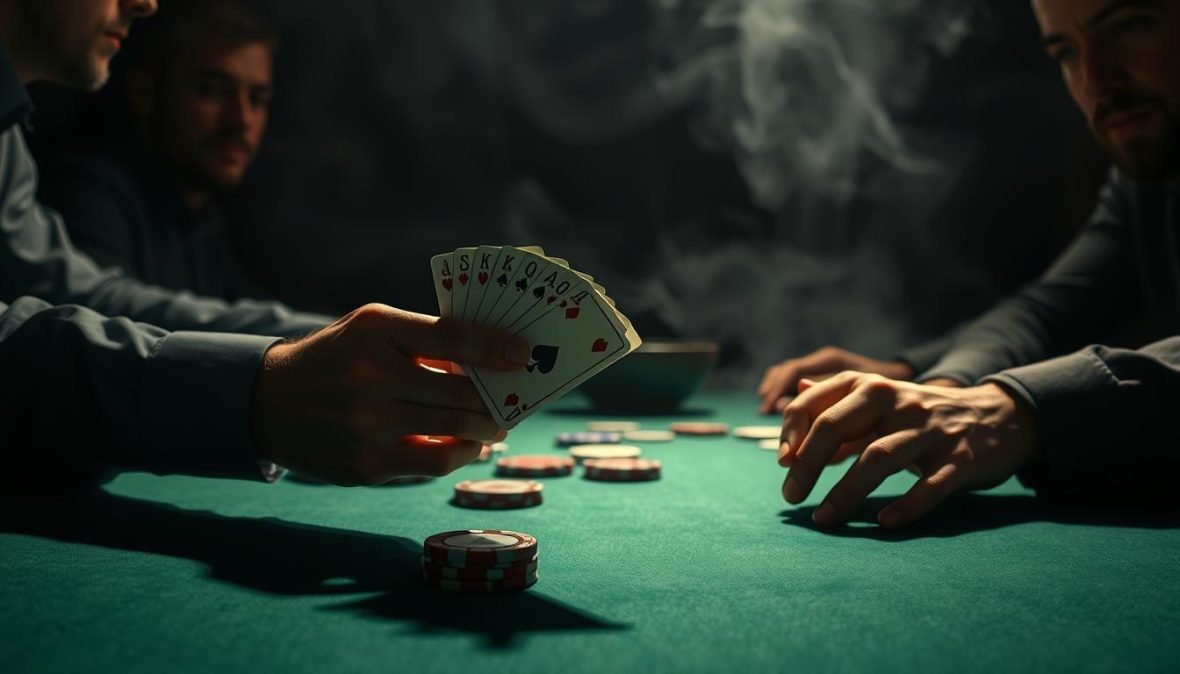Proven Bluffing Strategies for Dominating Any Poker Game

Effective bluffing can boost a player’s win rate by 15% when done right. Poker is more than just cards – it’s a mind game where bluffing and reading tells are crucial. This guide covers proven strategies to master the art of bluffing and gain an edge at the poker table.
Understanding the Psychology of Bluffing
Successful bluffing requires understanding human behavior and psychology. Key principles include:
- Emotional control under pressure
- Ability to project confidence
- Understanding subtle behavioral tells
A steady demeanor creates uncertainty for opponents. Emotional resilience can make opponents hesitate to call a bluff.
The Importance of Position in Bluffing
Your seat at the table greatly affects bluffing effectiveness:
- Early Position (first to act) – Least advantageous for bluffing
- Middle Position – Moderate bluffing potential
- Late Position (last to act) – Most flexibility for bluffing
Late position provides more information and control, making complex bluffs more likely to succeed.
Types of Opponents and Bluffing Techniques
Adapt your bluffing strategy based on opponent types:
- Tight players – Bluff selectively, build credible betting narratives
- Loose players – Wait for strong hands, use larger bet sizes
- Aggressive players – Carefully balance risk/reward, use counter-aggressive bluffs
Optimal Bluffing Frequencies
Successful bluffing requires strategic implementation:
- Aim to bluff about 15-20% of the time in specific scenarios
- Consider opponent tendencies, board texture, and position
- Use a 70% pot-sized bet to induce folds
Recognizing Signs of a Successful Bluff
Watch for these indicators when bluffing:
- Sudden changes in opponent’s breathing or posture
- Micro-expressions of nervousness
- Unusual hand movements or eye contact
- Inconsistent betting patterns
Tools for Analyzing Bluffing Techniques
Use poker tracking software to improve your bluffing strategy:
- Holdem Manager 3 – Comprehensive player statistics
- PokerTracker 4 – Detailed hand history analysis
- DriveHUD – Real-time opponent tracking
Building Your Bluffing Strategy
Develop a personalized bluffing approach:
- Understand your playing style and tendencies
- Analyze your strengths and weaknesses
- Practice exploiting opponent tendencies
- Maintain unpredictability in your bluffing frequency
Remember, successful bluffing requires constant refinement and adaptation. Study professional gameplay, practice regularly, and learn from both your successes and failures to become a formidable bluffer at the poker table.
Frequently Asked Questions
How often should I bluff in a poker game?
Aim for a 15-20% bluffing rate, but vary based on opponents and game dynamics. Unpredictability is key.
What’s the difference between bluffing in live and online poker?
Live poker relies on physical tells, while online focuses on betting patterns and timing tells.
How can I improve my ability to detect bluffs?
Watch for betting pattern changes, timing tells, and behavioral inconsistencies. Practice observing opponents carefully.
What tools can help improve my bluffing strategy?
Use poker tracking software like PokerTracker or Holdem Manager to analyze hand histories and identify patterns in your bluffing.
Master these bluffing strategies through consistent practice and analysis to gain a significant edge in your poker games.

